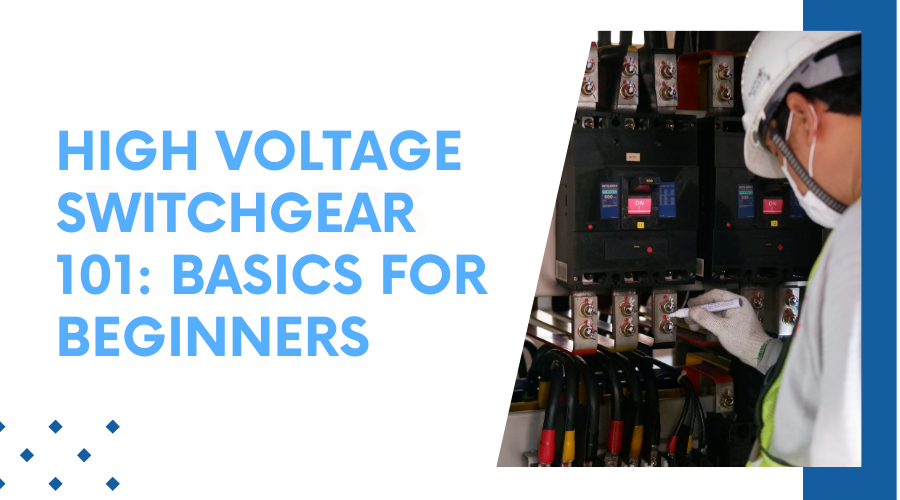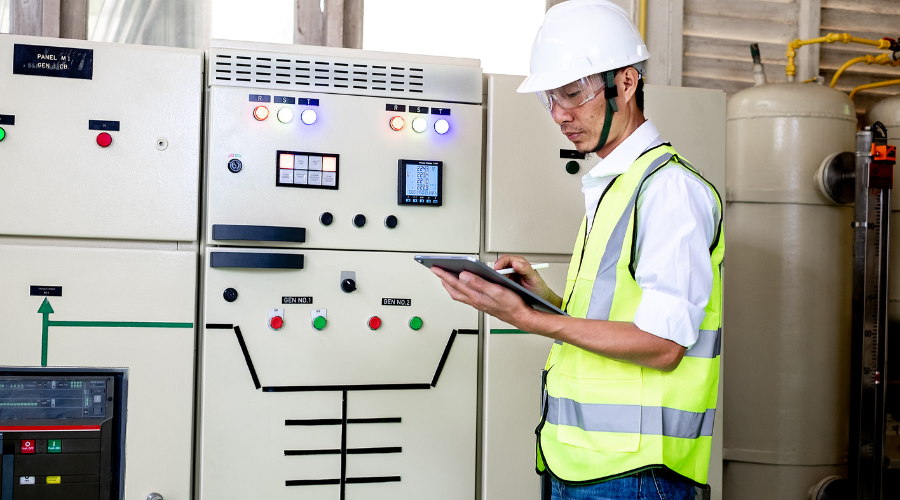


Hearing about the term high voltage switchgear discussed around here and there probably makes you wonder what it is and why it sounds weird, like something out of a sci-fi control room. In this blog we are gong to do a complete breakdown of switchgear.
In simple terms, high voltage switchgear is the bouncer of the entire electrical universe. It is that strong, vigilant guard at the entrance of your electrical system, deciding who gets to go in, who gets kicked out, and how fast a problem is dealt with when something goes wrong. Without it, the electricity that's powering factories, cities, and giant industrial setups would be like some kind of a torrent dealing with no dam-running on, chaotic, dangerous, and completely uncontrollable.
High-voltage switchgear is a whole combination of devices-the security gates-arranged to control, protect, and isolate electrical equipment rated at economic high voltages (typically more than 36 kV). It is the work of this electrical guardian to manage huge amounts of electrical energy without letting things be out of control.
The thing to understand is when you’re dealing with high voltages, even the tiniest disruption can cause a chain reaction that makes your whole system go down. Switchgear steps in like a referee, instantly cutting off faulty sections before the whole match turns into chaos.
Now, “high voltage” is really an extremely powerful current. That is not household electricity of 230V. It is energy that has the potential of energizing whole grids of cities as well as factories in industries. The intensity of the current can easily be explained by this, imagine holding a gate back against a flood. A slight leaking at low pressure of water? Manageable. High pressure, one slack spot and there you have a conflagratio. High voltage circuitry has to contend with that sort of pressure but it is an electron rather than water.
Switchgear isn’t just about turning power on and off. It’s about doing it fast, safely, and reliably. Think of it as a multitasker:
It isolates sections for maintenance, so technicians can work without the risk of frying themselves.
It protects the system by disconnecting faulty parts when trouble hits.
It helps control the load flow so that power is distributed smoothly.
In simpler terms, it’s the the safety net, and the emergency brake of the electrical system rolled into one.
Being in a high-voltage switchgear arrangement you are likely to come across combinations of circuit breakers, disconnect switches, relays, and in some cases, fancy overview systems. Circuit breakers are the star players here—they’re like trapdoors that slam shut the moment a fault shows up. Relays act like the brains, sensing when something’s wrong and sending the “cut it!” signal.
Disconnect switches? They’re the quieter, more low-key members of the team—used mainly when you need to physically separate parts of the system for inspection or repairs. Without them, you’d be playing with fire.

If you’ve ever passed by a power substation with those tall metal frames, insulators, and buzzing hum, you’ve probably seen high voltage switchgear at work. They’re in power generation plants, in the substations that feed electricity to entire cities, and in big industrial facilities where losing power even for a second could mean millions in losses.
You won’t find this stuff in your home or even most commercial buildings it’s too high-powered to be handled by household appliances. High voltage switchgear belongs in the big large-scale setups of electrical engineering.
Really, the truth is that electricity is the most useful and the most dangerous substance we handle with our lives every day. An outage of the grid in one section could be induced by a fault in the network due to the lack of adequate control strategies.
The switchgear is the safety valve that keeps the power from being turned off. In a split second, it would isolate faults from being able to cause further damage. Our world would be much worse if we did not have them; we would constantly be running around, getting power failures, equipment failures, and life accidents.
High voltage switchgear is not a standard building design and does use air as an insulating medium for one type, while another one uses SF₆ gas, which has wonderful insulating properties but presents a risk to the environment. Then there's vacuum switchgear, wherein a vacuum is literally used to control the current.
Choosing a suitable type is not just a matter of taste; site conditions, environmental conditions, and frequency of operation also must be taken into consideration. An example would be the choice between an SUV, a sporty car, and a heavy-duty truck whichever suits the work.
Behind every switchgear installation are engineers, technicians, and operators who make it functional. They do routine inspections; apply test equipment; upgrade systems for the purpose of taking on new demands. Even the most sophisticated switchgear cannot work without monitoring from humans.
Even though switchgear technology is advanced, its reliability and seamless function still requires skilled professionals to be depended upon completely.
This is the scenario you would like to avoid. If high voltage switchgear fails, it can lead to anything ranging from minor damage to power outlets to huge power outages. In the worst situations, it may even end in an explosion or fire.
Therefore, regular maintenance, testing and monitoring become a must. You would not want to drive a high-performance sports car at full speed without checking the brakes, would you? It's the same thing here a little ignoring of signs is heavily prone to trouble.
Ask about the type when you’re with a senior engineer. Whether it’s gas-insulated (GIS), air-insulated (AIS), or vacuum-based, each type has a different appearance. The gas-insulated types usually appear compact, enclosed, and clean-looking; whereas air-insulated types look more open and spread out.
Listen for the sound. When switchgear is in operation, it often emits a low-level, close to inaudible, low-frequency hum. The hum you hear is totally normal, but it's a good reminder that you're near live equipment, which can produce some serious power. Don't go near it unless you have specifically been authorized to do so!
If you're wondering about which types of maintenance are involved, it is important to know that high voltage switchgear is generally only serviced periodically (not frequently) and often involves an insulation test, breaker function checks/test, and relays calibration checks. In the beginning, you might be an observer assisting with the inspection—learning how to log the inspection conditions, recognizing corrosion, or signs of over-heating.
The more you are around it the more you will begin to notice the "body language" of switchgear what looks healthy; what looks under stress; what's nearing the end of its life.
High voltage switchgear may sound like a daunting, hyper-technical piece of equipment only meant for engineers with years of training. But its really just control, protection, and safety - all concepts that are relatable.
Essentially, it is a gatekeeper that limits electricity from allowing for chaos. In a world where everything revolves around power (literally), switchgear is the unsung hero you never have to think about
So the next time you pass a substation or come across a huge industrial control room, know that beyond those metal cabinets and tangled wiring is a quiet yet vigilant protector of your electricity distribution, ensuring the lights stay on and machines stay running.
1. What voltage range is considered “high voltage” in switchgear?
Switchgear with high voltage most often implies any system with greater than 36 kV. Typical values that you will find in the industrial and utility world are 66 kV, 132 kV, and higher, again depending upon the application.
2. Is high voltage switchgear dangerous to be around?
Yes, very. High voltage can arc through the air and cause severe injury or death. That’s why switchgear is usually placed in secure, restricted-access areas, and why only trained personnel are allowed to work near it.
3. How often does high voltage switchgear need maintenance?
It depends on the type and usage, but generally, it’s inspected at least once a year. Critical systems may have quarterly or even monthly checks, including insulation testing, breaker operation checks, and relay calibration.
The advent of smart grids has changed how electric power is produced, distributed, and consumed.
READ FULLHigh Voltage Switchgear It is a
READ FULLTransformer substations are like the core of our electrical systems. They transfer power to our h
READ FULL